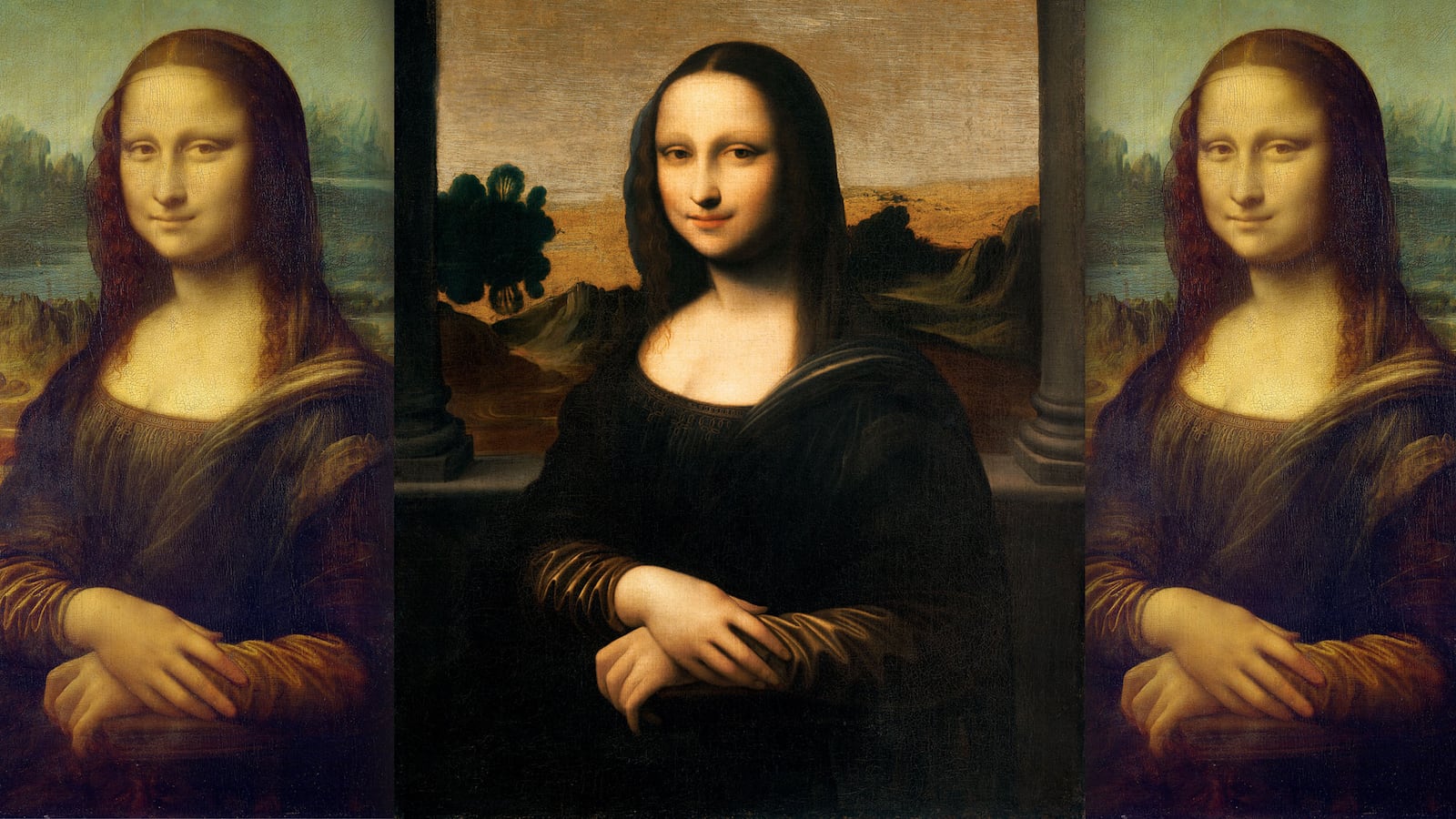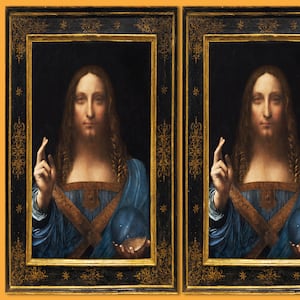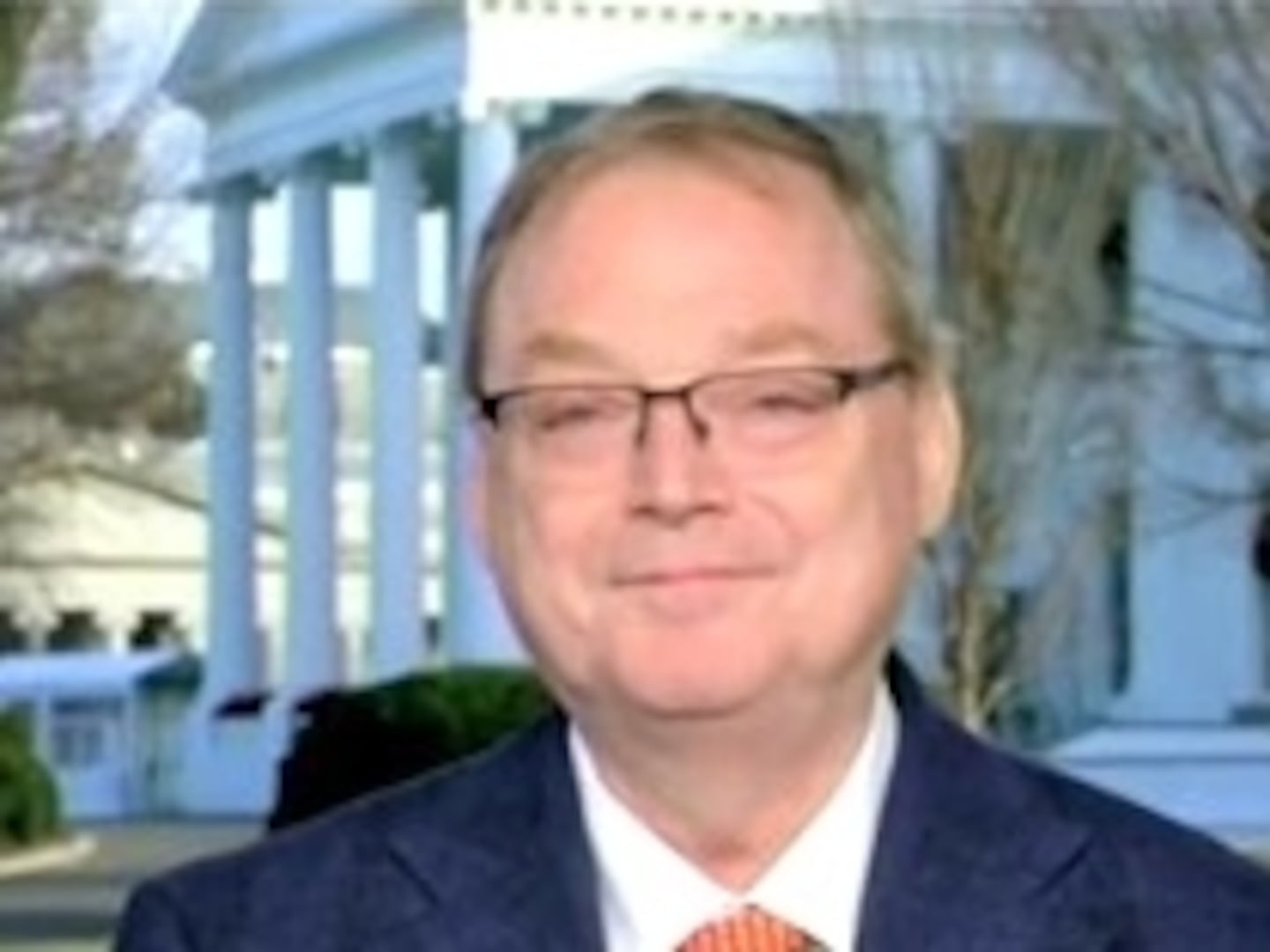ROME—When the long-awaited Leonardo da Vinci exhibition celebrating the Italian master’s life opened in the Louvre in Paris this week, two paintings were noticeably missing from the exhibit hall—and they are both of the same woman.
Despite being one of Leonardo’s most famous works, the Louvre decided not to relocate the “Mona Lisa” from her recently renovated viewing room to the exhibit space created to mark the 500th anniversary of the artist’s death. Visitors will instead have to traipse across a hall through the selfie-taking crowds to see her where she normally hangs.
The second painting that Leonardo aficionados will miss is what many believe is an earlier version of the “Mona Lisa,” which shows a much younger—and dare we say—prettier version of Lisa Gherardini del Giocondo, the wife of Francesco del Giocondo, who commissioned the work in the early 1500s.
The existence of an earlier “Mona Lisa” has dogged art experts for centuries. Those behind the Zurich-based Mona Lisa Foundation claim on their website that Leonardo used the earlier “Mona Lisa” as a model for the “Mona Lisa” he created under the patronage of Giuliano de Medici in 1513. If it is indeed an authentic Leonardo, as many believe, it is worth millions. And since the painting hanging in the Louvre is owned by the French state, the idea of a privately owned “Mona Lisa” someday being auctioned off is titillating to many collectors.
Theories about why there would be two paintings are varied. First, Leonardo did paint two versions of many of his masterpieces, including a portrait of Jesus in Renaissance era clothing called “Salvator Mundi” that has gone missing and that the Louvre has replaced with an earlier less polished version recently attributed to Leonardo. Many believe that Leonardo started the earlier “Mona Lisa” painting for Del Giocondo when Lisa was in her early 20s and painted the one hanging in the Louvre with his own version of age progression techniques he dreamed up to depict how she would surely look a decade later. Forensic art specialists have tried their own versions of modern age enhancement on the earlier version and come up with an uncanny likeness of the painting that hangs in the Louvre.
The 16th-century artist and art critic Giorgio Vasari, an expert in all things Leonardo, describes the “Mona Lisa” as an unfinished painting in the famous book The Lives of the Most Excellent Italian Painters, Sculptors and Architects. The portrait in the Louvre is clearly not unfinished. But the details of Lisa’s hair are unfinished in the so-called earlier “Mona Lisa” painting, and she is sitting in front of two marble columns that do not appear in the Louvre version. Those columns have been depicted in other paintings, though, including a pen and ink sketch the artist Rafael created after a 1508 visit to Leonardo’s studio, where the earlier version might have been leaning on an easel.
The authenticity is why the battle over who owns it is heating up. Londoners Andrew and Karen Gilbert say they own 25 percent of the painting, and who exactly owns the other 75 percent remains murky.
The Gilberts have launched a legal battle in Florence to claim their share with the help of the acclaimed group Art Recovery International. In August, Giovanni Battista Protti, a lawyer working for Art Recovery International on the Gilberts’ behalf, filed a writ of summons in Florence to force the Mona Lisa Foundation, which says it doesn’t own the painting but seems to be the only entity with control over it, to name the secret international consortium that does own it as Mona Lisa, Inc. In a court case last week, Protti was able to file another brief to lay the legal groundwork to smoke out just who is behind Mona Lisa, Inc. so that the Gilberts might make their claim.
The earlier “Mona Lisa” is thought to have been kept in Rome after it was abandoned by the artist in the 16th century. It was acquired by a British nobleman during the era of the Grand Tour two centuries later and brought to England, where he kept it at his Somerset estate. The painting showed up again in 1913 when Hugh Baker, the curator of a museum in Bath, England, bought it on auction and stored it in his Isleworth, London home, which is why it is sometimes referred to as the “Isleworth ‘Mona Lisa.’” But as World War I broke out, Baker feared for the safety of the painting and sent it to the U.S. where it was housed in the Boston Museum of Fine Arts until 1918. When the war ended, Baker brought it back to the U.K..
When Baker died in 1936, his sister Jane Urquhart apparently let it go to an eccentric art dealer and historian named Henry Pulitzer, who wrote about it in his 1966 book Where is the Mona Lisa? So concerned was he for the safety of the painting, he locked it away in a Swiss bank vault for 40 years. During that time, a porcelain maker named Leland Gilbert bought a 25 percent share of the work from him, according to Protti and backed up by a BBC documentary.
When Gilbert died, that share was passed down to his heirs, who have the certificate of purchase, according to Protti. When Pulitzer died, the 75 percent went to his partner Elizabeth Meyer, whose own heirs have no idea what happened to the work of art. The Swiss-based Mona Lisa Foundation instead says that when Meyer died, the entirety of the painting went to the international consortium known as Mona Lisa, Inc. and that the Gilberts’ “alleged” share is of no consequence.
Protti told The Daily Beast that he does not know who the people behind the foundation are, though their website shows a collection of mostly Russian, French and British collectors. Nor does Protti know who is behind Mona Lisa, Inc. But the group appears to be financially based in Anguilla, tied to discoveries uncovered through the Panama Papers investigations. That secret cache of 11 million documents leaked to the press by Panamanian law firm Mossack Fonseca pulled back the curtain on holding companies used to launder money, including many that trafficked in art of questionable provenance as an investment guarantee. The Florentine court now tasked with determining how the earlier “Mona Lisa” fits into that will meet again in March after international subpoenas for documentation are carried out.
Protti told The Daily Beast that he believes the Gilberts will get their 25 percent, despite efforts by the Mona Lisa Foundation to stop them. The foundation has pushed the theory of the authenticity of the painting which has increased its worth, but it is unclear if it will profit or what would motivate it from stopping others who might have a rightful claim to the fortune tied to the painting. Numerous calls and emails by The Daily Beast to those named on the Mona Lisa Foundation website over the last week were ignored. But Markus Frey, one of the board members, recently told the Art Newspaper that the Gilberts’ claim to ownership was “ill-founded and has no merit.”
After this story was published, Marco Parducci, the lawyer representing the Mona Lisa Foundation replied to earlier requests for comment. He argues that the Gilbert family has failed to prove that they own a quarter of the painting. “It is well known that the painting was publicly exhibited in several countries over recent years,” he told The Daily Beast. “It is amazing that, despite this, the Gilberts did not make any case or claim. This suggests that they do not have much confidence in their own claim and prefer to turn to the media in hopes of obtaining financial gain, particularly given the recent confirmation of the painting’s attribution to Leonardo.”
Parducci says he is confident the case will be closed at the next hearing. “The fact that the Gilberts’ claim to have identified the entity which owns the painting, which the Foundation can neither confirm nor deny, does not change this in any way,” he said.
The current location of the earlier “Mona Lisa” is unclear. The Mona Lisa Foundation website says it was displayed in Shanghai in 2016 and lists several successful authenticity tests carried out on it since then. Protti says the last he heard the painting is scheduled for display at a museum in Pavia, Italy, in November. The Daily Beast could not confirm that it is slated to show anywhere in that city.







